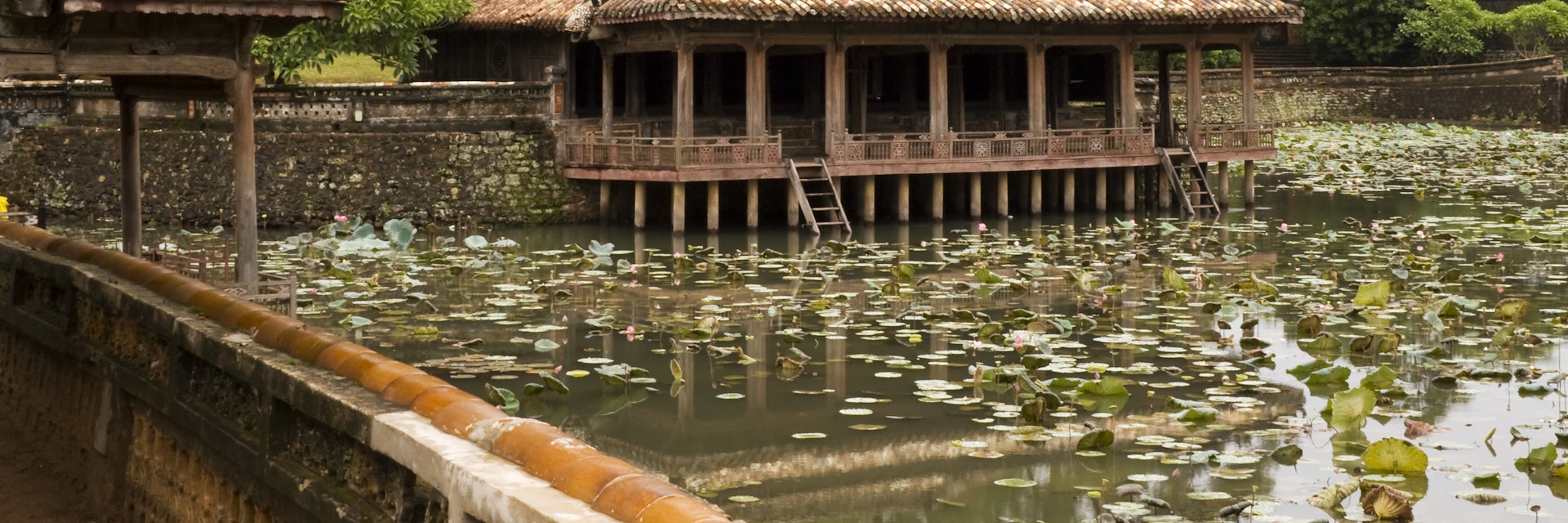This tomb (completed in 1867) is the most popular, imposing and impressive of the royal mausoleums, designed by Emperor Tu Duc himself before his death. The enormous expense of the tomb and the forced labour used in its construction spawned a coup plot that was discovered and suppressed. Tu Duc lived a life of imperial luxury and carnal excess, with 104 wives and countless concubines (though no offspring). The tomb is 5km south of Hue on Van Nien Hill in Duong Xuan Thuong village.
From the entrance, a path leads to Luu Khiem Lake. The tiny island to the right, Tinh Khiem, is where Tu Duc used to hunt small game. Across the water to the left is Xung Khiem Pavilion, where he would sit with his concubines, composing or reciting poetry.
Hoa Khiem Temple is where Tu Duc and his wife, Empress Hoang Le Thien Anh, were worshipped; today it houses royal artefacts. The larger throne was for the empress; Tu Duc was only 153cm tall. Minh Khiem Chamber, to the right behind Hoa Khiem Temple, was originally meant to be a theatre. Dress-up photo opportunities and cultural performances are available here. Directly behind Hoa Khiem Temple is the quieter Luong Khiem Temple, dedicated to Tu Duc’s mother, Tu Du.
Around the lake shore is the Honour Courtyard. You pass between a guard of elephants, horses and diminutive mandarins (even shorter than the emperor) before reaching the Stele Pavilion, which shelters a vast 20-tonne stele. Tu Duc drafted the inscriptions himself. He freely admitted he'd made mistakes and named his tomb Khiem (Modest). The tomb, enclosed by a wall, is on the far side of a tiny lagoon. It’s a drab monument and the emperor was never interred here; where his remains were buried (along with great treasures) is not known. To keep it secret from grave robbers, all 200 servants who buried Tu Duc were beheaded.





